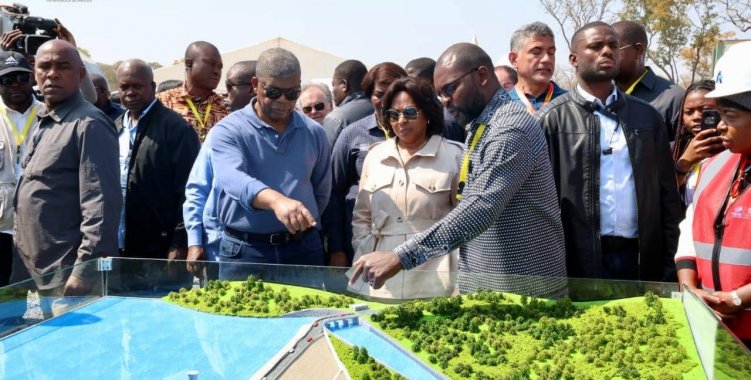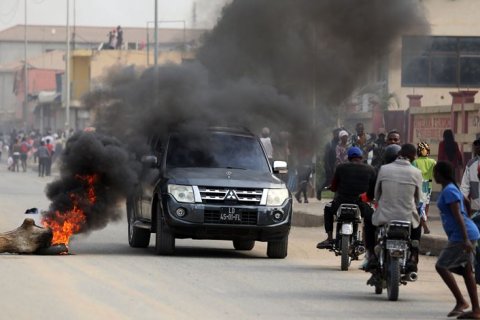On the third and final day of the work in Cunene, the Head of State observed the progress of the construction work on the Ndué dam, which is located in the municipality of Cuvelai, in Cunene, and is scheduled for completion in December of this year.
According to a government statement, which VerAngola had access to, on the occasion, the President of the Republic, who was accompanied by the First Lady of the Republic, Ana Dias Lourenço, observed the project and was also informed about the execution of the works.
This dam, whose construction is 74.5 percent physically complete and 74.1 percent financially complete, is scheduled to come into operation in the first quarter of next year.
"The Ndué Dam, which is 1500 meters long and 32.80 meters high, is designed to serve an area of 2000 hectares and store up to 170 million cubic meters of water", the statement reads.
According to another note from CIPRA, to which VerAngola had access, the infrastructure will serve to "accumulate water for the population and livestock", as well as "will have a 75-kilometre adductor channel and 15 chimpacas".
"In total (reservoir and chimpacas), the dam will be able to store a volume of 50 thousand cubic metres of water", states the note, which adds that "this public work represents a State investment of 73 million dollars".
As part of the visit – where João Lourenço saw the surface spillway, the dam's reservoir, as well as passed through the diversion gallery, where he was satisfied and spoke for a few minutes with the Ministers of Tourism and Energy and Water – João Baptista Borges assured that the transfer of water from the Cunene River to the Ndué dam is progressing well.
Quoted by Jornal de Angola, the government official said that both the Ndué and Calucuve dams will reduce the lack of water, ensure food security, promote agriculture, encourage tourism and revitalize public facilities.
According to Angop, the Ndué dam began construction in March 2022 and, upon completion, will benefit approximately 55,000 families and 60,000 animals, in addition to providing direct employment to 897 citizens (722 nationals and 125 expatriates), and the construction of the dam will last 30 months and is estimated to cost approximately 192 million dollars.
The Calucuve dam is 44 percent complete and has an estimated cost of 177 million dollars. At 19 meters high, this project should be completed in 20 months.
In addition to these dams, there are also ongoing projects on the right marge, such as the construction of the Cova do Leão dam (Cahama).
It should be noted that the Ndué dam is part of the Programme to Combat the Effects of Drought in Southern Angola (PCESSA), which also includes Huíla and Namibe.
The programme was presented by engineer Narciso Ambrósio, director of the National Institute of Water Resources, in a presentation that was accompanied by João Lourenço.
On the occasion, according to the Government's statement, Narciso Ambrósio explained that the construction of the Nene dam is planned in Huíla, which will reinforce "the water supply in the city of Lubango and adjacent municipalities, as well as the construction of the Neipo dam, associated with a canal that will carry water to Chianje-Quihita, with chimpacas that will serve as permanent reservoirs".
In Namibe, the program includes "the construction of the Bentiaba dam and the rehabilitation of the Belo dam, as well as the recovery of 43 small masonry dams in the municipalities of Bibala, Camucuio, Virei and Moçâmedes", whose initiatives aim to "improve the availability of water in these regions, where some of the infrastructure dates back to the 1960s".







